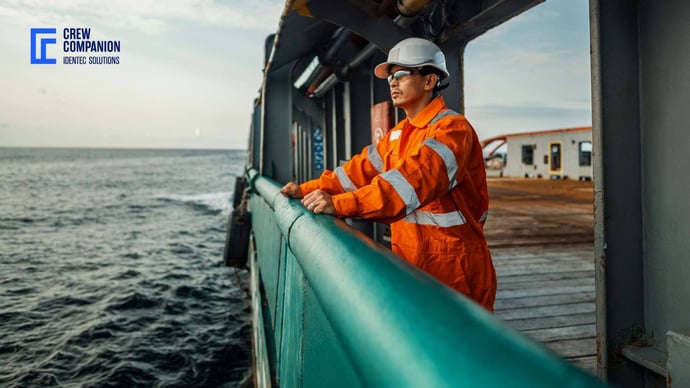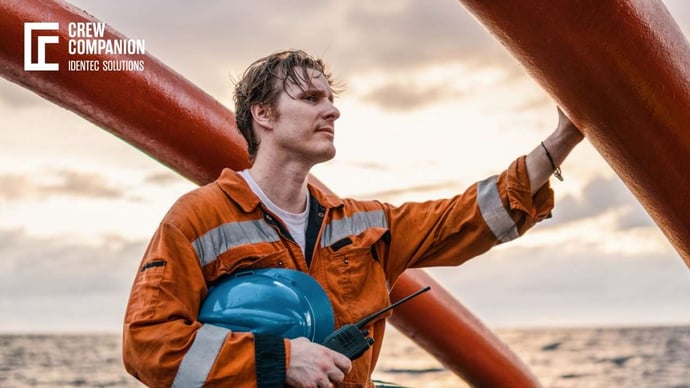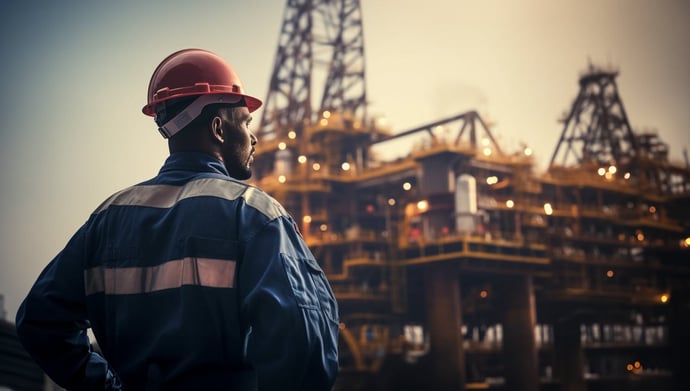The North Sea Oil History
| Written by Michal Wozniakowski-Zehenter

No video selected
Select a video type in the sidebar.
Shores of the North Sea
Commercial oil extraction on the North Sea shores began in 1851 when James Young extracted oil from torbanite in Scotland's Midland Valley. In 1859, oil was discovered in the Wietze field near Hanover, Germany, leading to the identification of seventy more fields, mostly in Lower Cretaceous and Jurassic reservoirs, producing about 8,400 barrels per day.
In 1910, gas was accidentally discovered in a water well near Hamburg, resulting in minor gas finds in other parts of Germany. In England, BP discovered gas in 1938 and commercial oil in 1939 in Nottinghamshire. Further discoveries in the East Midlands increased production to 2,500 barrels per day, and exploration from 1953 to 1961 uncovered the Gainsborough field and ten smaller fields.
The Netherlands first saw oil during a 1938 drilling demonstration at the World Petroleum Congress in The Hague. In the year of 1943, Exploratie Nederland, part of Royal Dutch/Shell, discovered oil under Schoonebeek near the German border. In 1948, NAM found gas in Zechstein carbonates at Coevorden. The first exploration well in Groningen province, Haren-1, was drilled in 1952 and penetrated the Lower Permian Rotliegendes sandstone, although it only contained water. The Ten Boer well was completed as a minor gas producer from the Zechstein carbonates. In 1959, the Slochteren-1 well delivered gas in the Rotliegendes, identifying the vast Groningen gas field, now estimated to hold 96 trillion cubic feet of recoverable gas reserves. Smaller gas discoveries followed to the west of Groningen.
North Sea Oil History: 1960s
The U.K. Continental Shelf Act was enacted in May 1964. Later that year, seismic exploration and drilling the first well commenced. However, both this well and a second one on the Mid North Sea High were dry, as they lacked the Rotliegendes formation. In September 1965, B.P.'s Sea Gem rig discovered gas in the West Sole Field. Tragically, the celebrations were cut short when the Sea Gem sank, resulting in the loss of 13 lives after part of the rig collapsed while being moved away from the discovery well. In December 1965, Conoco and the National Coal Board discovered the Viking Gas Field with well 49/17-1, which found gas-bearing Permian Rotliegend Sandstone at a depth of 2,756 meters below sea level. Helicopters were introduced to transport workers at this time. Significant gas discoveries followed in 1966, including Leman Bank, Indefatigable, and Hewett, but by 1968, exploration interest in the British sector waned due to a ban on gas exports and low prices from the sole buyer, British Gas. West Sole began production in May 1967. Meanwhile, licensing regulations for Dutch waters were not finalized until 1967.
The scenario changed dramatically in December 1969 when Phillips Petroleum found oil in Danian-age Chalk at Ekofisk, located in Norwegian waters in the central North Sea. That same month, Amoco discovered the Montrose Field about 217 kilometres east of Aberdeen. Initially, the well was intended to search for gas to verify the extension of the southern North Sea gas province northward. However, Amoco was surprised to find oil instead. B.P., having been awarded several licenses in the area during the second licensing round in late 1965, had been hesitant to explore them. Inspired by Ekofisk's discovery, B.P. drilled a dry hole in May 1970 but subsequently discovered the giant Forties Oil Field in October 1970. In the following year, Shell Expro discovered the giant Brent oilfield in the northern North Sea, east of Shetland in Scotland, and the Petronord Group discovered the Frigg gas field. Additional major discoveries included the Piper oilfield in 1973 and both the Statfjord Field and the Ninian Field in 1974, with the Ninian reservoir comprising Middle Jurassic sandstones at a depth of 3,000 meters below sea level in a "westward tilted horst block".
1970s GLOBAL OIL CRISISes AND BOOM IN EUROPE
It was October 1973 when OAPEC (the Organization of Arab Petroleum Exporting Countries) imposed a full oil embargo on countries that supported Israel during the Fourth Arab–Israeli War. Saudi Arabia, led by Faisal bin Abdulaziz Al Saud, forced it and initially targeted Canada, Japan, the Netherlands, the United Kingdom, and the United States. Later, Portugal, Rhodesia, and South Africa were included. Although it was lifted in March 1974, oil prices had surged nearly 300%, from $3 to almost $12 per barrel worldwide, with even higher prices in the United States. This embargo caused a major oil crisis, significantly affecting the global economy and international politics. This event is known as the "first oil shock," while the 1979 oil crisis, caused by the Iranian Revolution, is referred to as the "second oil shock."
In Northern Europe, oil production began from the Argyll & Duncan Oilfields (later known as Ardmore) in June 1975, followed by the Forties Oil Field in November. The Beatrice Field in the inner Moray Firth, a Jurassic sandstone/shale reservoir 1829 meters deep in a fault-bounded anticlinal trap, was discovered in 1976 with well 11/30-1, drilled by the Mesa Petroleum Group. Fun fact about this field is that it was named after T. Boone Pickens' wife, Bea, and is notable as the only oil field in the North Sea named after a woman.
The North Sea's volatile weather conditions have made drilling particularly hazardous, resulting in numerous fatalities. These challenging conditions also make extraction a costly process. By the 1980s, the cost of developing new methods and technologies for efficient and safe extraction in the North Sea far surpassed NASA's budget for landing a man on the moon. North Sea exploration has consistently pushed the limits of extraction technology and, later, discovery and evaluation technologies. This includes advancements in 2D, 3D, and 4D seismic imaging, sub-salt seismic, and immersive display and analysis suites powered by supercomputers.
In 1978, the Gullfaks oil field was discovered, followed by the Snorre Field in 1979, which produces from the Triassic Lunde Formation and the Triassic-Jurassic Statfjord Formation, both fluvial sandstones in a mudstone matrix. The Oseberg oil field and Troll gas field were also discovered in 1979. The Miller oilfield was discovered in 1983. The Alba Field, which is produced from sandstones in the middle Eocene Alba Formation at 1860 meters subsea, was discovered in 1984 in UKCS Block 16/26. That same year, the Smørbukk Field, located in 250–300 meters of water and producing from Lower to Middle Jurassic sandstone formations within a fault block, was discovered. Additionally, the Snøhvit Gas Field and the Draugen oil field were discovered in 1984, followed by the Heidrun oil field in 1985.
The largest U.K. oil field discovered in the past twenty-five years is Buzzard, located off Scotland. Found in June 2001, it has producible reserves of almost 64 million cubic meters (400 million barrels) and an average output of 28,600 to 30,200 cubic meters (180,000–220,000 barrels) per day.
On the Norwegian side of the North Sea, is the Johan Sverdrup oil field, found in 2010. It is one of the largest discoveries on the Norwegian Continental Shelf, with total reserves estimated at 1.7 to 3.3 billion barrels of recoverable oil. Johan Sverdrup is expected to produce 120,000 to 200,000 barrels of oil daily, with production starting on October 5, 2019.
For more about the North Sea oil, see our latest article "North Sea Oil Fields Map".
North Sea Oil History: Deadly Accidents
One of the most sad accidents happened on Piper Alpha. It was an oil platform located in the North Sea, about 120 miles northeast of Aberdeen, Scotland. Operated by Occidental Petroleum (Caledonia) Limited (OPCAL), it began production in December 1976, initially as an oil-only platform before later adding gas production. On the night of July 6-7, 1988, Piper Alpha exploded and collapsed due to sustained gas jet fires, resulting in the deaths of 165 men on board (with 30 bodies never recovered) and two rescuers. Sixty-one workers escaped and survived. The total insured loss was about £1.7 billion (£6 billion in 2023), making it one of the costliest man-made catastrophes ever. At the time, the platform accounted for roughly 10% of North Sea oil and gas production and was the world's largest single oil producer. The disaster remains the worst offshore oil and gas disaster in terms of lives lost and is comparable only to the Deepwater Horizon disaster in terms of industry impact. An inquiry blamed the incident on inadequate maintenance and safety procedures by Occidental, although no charges were brought.
William Douglas Cullen, Baron Cullen of Whitekirk, a former senior member of the Scottish judiciary, remarked, "Sometimes the warning signs are in reports about danger, and I return to the Piper Alpha disaster. The initial explosion and the subsequent fire occurred within an hour and a half due to the rupture of several gas risers routed through the platform. This led to the loss of normal evacuation means, the destruction of the platform, and a huge loss of life. The management could have had no doubt about the grave consequences to the platform and its personnel in the event of a prolonged high-pressure gas fire."
The second one was The Alexander L. Kielland, a Norwegian semi-submersible drilling rig. On March 27, 1980, it faced high winds that generated waves up to 12 meters high. These conditions battered the rig's legs, causing a bracing on one of the legs to fail. This led to a series of structural failures, resulting in the platform tilting 30 degrees and eventually capsizing. Out of the 212 workers on board, only 89 survived, with most fatalities caused by drowning. This capsize was the worst disaster in Norwegian waters since World War II. The rig, located about 320 kilometres east of Dundee, Scotland, was owned by the Stavanger Drilling Company of Norway and was leased to the U.S. company Phillips Petroleum at the time of the disaster (learn more about EHS risk management).
North Sea Oil History: Technological Advancements
Technological innovation has been crucial in the development of North Sea oil. The challenging environment has pushed the industry to create new technologies and methods. One key innovation is the floating production, storage, and offloading (FPSO) units (read more about FPSO safety). These vessels can produce oil from fields where fixed platforms aren't feasible, store it onboard, and offload it to tankers. This is particularly useful for smaller or remote fields.
Directional drilling and subsea technology have also transformed North Sea oil production. Directional drilling allows multiple wells to be drilled from one platform, reducing environmental impact and increasing efficiency. Subsea technology, including remotely operated vehicles (ROVs) and subsea processing systems, facilitates the development of deepwater fields. Additionally, digital technology and data analytics have revolutionized the industry. Real-time monitoring, predictive maintenance, and advanced modelling have enhanced efficiency and safety, reducing accident risks and minimizing downtime.
North Sea Oil History: Decline of Production
By the late 1990s and early 2000s, many of the largest North Sea fields were in decline. Production peaked in the U.K. sector in 1999 and in the Norwegian sector in 2001. To illustrate, production in the U.K. dropped from over 4.5 million barrels of oil equivalent per day (boed) in 1999 to around 1.2 million boed in recent years.
As fields age, their oil output decreases, making production more challenging and expensive. This decline has shifted the focus to decommissioning old infrastructure. Decommissioning involves safely dismantling and removing offshore platforms, subsea installations, and pipelines. This is a complex and costly process, with estimates suggesting that North Sea decommissioning could cost hundreds of billions of dollars in the coming decades. The process must balance safety, environmental protection, and cost-effectiveness. Strict regulations ensure decommissioning is done responsibly, aiming to minimize environmental impact and protect marine ecosystems.
Learn more about the current state of the North Sea Oil Platform
FAQ
How much North Sea oil is left?
With an estimated 24 billion barrels of oil equivalent (BOE) still potentially remaining in the reservoir, the North Sea is expected to continue being a significant petroleum source for about 35 more years.
How many oil rigs are on the North Sea?
Since production began in 1971, oil and gas have been extracted from 123 fields on the Norwegian shelf. By the end of 2023, 92 fields were active: 67 in the North Sea, 23 in the Norwegian Sea, and two in the Barents Sea. Four new fields began production in 2023.
TAKEAWAY
The history of North Sea oil is a story of discovery, innovation, and transformation. From its early days of exploration and rapid development to the challenges of declining production and decommissioning, the North Sea oil industry has profoundly impacted the economies, politics, and environments of the surrounding countries.
As the industry transitions to a low-carbon future, it faces both challenges and opportunities. The expertise and infrastructure developed over decades of oil production can be leveraged to support renewable energy, carbon capture, and hydrogen production, ensuring that the North Sea continues to play a vital role in the region's energy landscape.
Sources
(1) https://www.reuters.com/business/energy/north-sea-energy-firms-look-beyond-uk-after-tax-squeeze-2024-05-20/#:~:text=RAPID%20DECLINE,4.5%20million%20boed%20in%201999.
(2) https://www.oxfordenergy.org/publications/has-the-north-sea-entered-a-late-life-crisis/
(3) https://www.thechemicalengineer.com/features/piper-alpha-the-disaster-in-detail/

Author
Michal Wozniakowski-Zehenter, Marketing Manager
Michal Wozniakowski-Zehenter is an experienced marketing and project management professional. He spent most of his career on projects with a strong focus on digital marketing and event management. He is a very active voice representing offshore and mining industries through social media channels. Michal writes mainly about offshore oil and gas, renewable energy, mining and tunnelling. Compiling and sharing the knowledge within industries is one of his goals.




